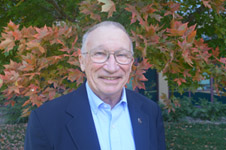Natural Resources, School of
Document Type
Article
Date of this Version
2020
Citation
Hallum, D.R., Hanson, P.R., Tucker, S.T., Diffendal, R.F. Jr., 2020, Hydrogeology and Geology of the Lower North and South Platte Rivers of Nebraska, Nebraska Geological Society Field Trip 2020, Guidebook No. 37, University of Nebraska–Lincoln, Conservation and Survey Division, 38p+
ISBN-13 978-1-56161-086-0
Abstract
The 2020 Nebraska Geological Society field trip will visit central Nebraska, and explore the geology and hydrogeology of the upper Platte, Lower South Platte and Lower North Platte rivers. The field trip area consists of a roughly east-west strip of land, approximately 100 kilometers long, and generally less than 10 kilometers north and south of the Platte, North Platte and South Platte rivers’ channels over most of the reach; from Brady, NE, upstream to Big Springs on the South Platte River and Lewellen on the North Platte River (Map 1). In addition to the river valleys, participants will observe alluvial fans along the valley margin, adjacent uplands consisting of variable bedrock strata, as well as loess, dune sand and gravel. This field excursion will examine these features with the goal of better understanding the region with respect to the aquifer and stratigraphic framework, hydrogeology, and water management challenges in the region.
During this tour, participants will visit locations with various soils associations (Map 2), including deep well-drained Coly-Uly soils formed on slopes and uplands on loess, deep excessively-drained Valentine soils formed on eolian sand and Hersh-Valentine soils formed on eolian sand with loam, the shallow poorly-drained Lawet-Gothenburg-Platte valley soils over alluvium, the well to excessively-drained Dix-Altvan-Colby soils formed on sand and gravel of terraces, slopes and alluvial fans, moderately permeable well-drained terrace and footslope soils of the Bridget-Tripp-McCook series, and even the weakly cemented Canyon-Rosebud-Rock Outcrop soils on loamy calcareous residuum. They will travel within or across the Valleys, Bluffs and Escarpments, Plains, Dissected Plains and Sandhills topographic regions (Maps 3), and will visit the Rolling Plains and Breaks, Central High Tableland, Nebraska Sandhills and the Central High Plains – Northern Part Major Land Resource Areas (Map 4, USDA-SCS, 1981).
October 18-20, 2020



Comments
Copyright 2020, Board of Regents of the University of Nebraska